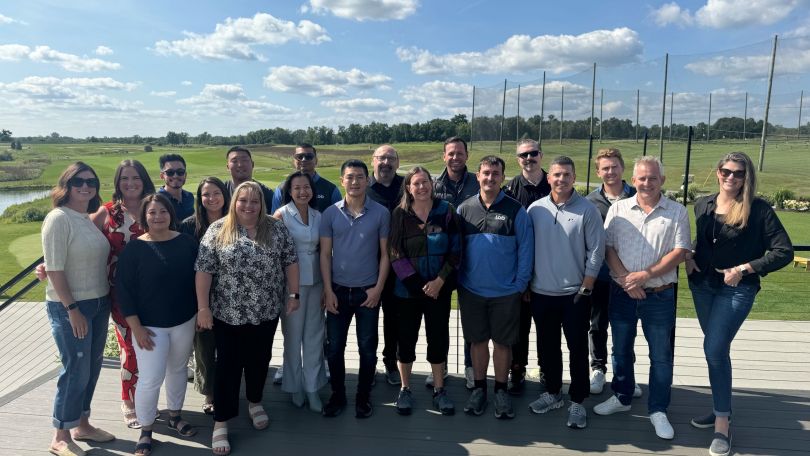The logistics of sending a letter are complicated — at least, they are when you’re the person in charge of sending thousands of letters on behalf of your company.
Enter, Lob.
Lob, a direct mail automation platform that helps businesses send personalized physical mail, is on a mission to simplify this task. And Tyler Stewart, a group product manager at the company, is one of the brains behind the technology.
Stewart and the Lob product team build “autopilot” systems to handle the logistics of print-and-mail communications, which includes the API scaffolding that one of Lob’s customer companies can tailor to its needs.
“We saw a clear gap in the market for a unified logistics layer that could connect mailers, printers and delivery providers through a single, easy-to-use API,” Stewart said. “At Lob, we’re always looking for ways to make sending and delivering mail more efficient for our customers and partners.”
What do Lob APIs do?
Lob found its niche as a company by making the experience of sending physical mail similar to using digital marketing tools that help with the automation, personalization and tracking of campaigns. To that end, the APIs at Lob help companies automate direct mail by integrating with their CRM or customer data, verifying addresses, and tracking mail campaigns.
The product team at Lob is constantly searching for ways to improve the technical abilities of its APIs and services. While the Logistics API worked well, Stewart and his team realized that they could expand their reach if they could connect it to more commercial printers.
“Our big ‘aha moment’ came when we realized the Logistics API could do more than just improve how we move mail for our current customers,” Stewart said. “It could also unlock a whole new level of scale by bringing more printers and partners into our network nationwide.”
The result? A new Logistics API and an expanded print delivery network.
“It became clear we weren’t just solving for today — we were laying the groundwork for a smarter, more connected logistics layer that could keep growing as our network grows,” Stewart said. “That shift in thinking helped us design the product to be flexible and future-proof, so we can keep adding partners and routes without losing the reliability that our customers expect.”

What Collaboration Looks Like on Lob’s Product Team
Incorporating feedback from other departments is a quintessential part of the product team’s way of working.
“We put a big focus on cross-functional collaboration,” Stewart said. “Teams are encouraged to test new ideas, share feedback early and learn fast.”
In order to scale its direct mail API, for example, Stewart’s team regularly met with other departments like supply chain, operations and finance, all of which had close relationships with printers and logistics partners.
“We spent time meeting partners in person to hear what they needed most, which helped us shape the API in a way that really works on the ground,” Stewart said.
Equally as important? According to Stewart, it was pivoting when something wasn’t working.
“Not every product or feature is going to be a hit, and that’s OK,” he said. “Knowing when to change course and focus on something better is just as big a win as shipping the original plan.”
Thanks to this companywide effort, the API now allows companies to connect with a network of commercial printers around the globe, then uses smart routing and direct postal integrations so that mail arrives at someone’s doorstep in as little as four days.
“By bringing more partners onto our platform, we’re creating a connected ecosystem that raises the bar for the entire industry,” Stewart said.
“By bringing more partners onto our platform, we’re creating a connected ecosystem that raises the bar for the entire industry.”

Technical Challenges That Lob’s Product Team Overcame
While connecting to logistics companies was beneficial to Lob’s product, it didn’t come without its challenges.
One of the biggest hurdles was connecting the API to logistics systems that don’t speak the same programming language.
“Each provider has its own way of structuring data, tracking shipments and reporting status updates,” Stewart said. “To make sure this didn’t create gaps for our customers, we had to design the API to handle these differences without losing accuracy or slowing things down.”
On a technical level, the team faced this head-on by building flexible mapping and validation directly into the system.
“This means that no matter which provider we’re working with, the data we pass through stays consistent and reliable for our customers,” Stewart explained. He added that it took extra effort upfront, but the decision will allow them to grow the network faster without compromising on quality.
Inside the Product Team Culture at Lob
Every product team has its own unique culture, and at Lob, it’s one defined by an emphasis on autonomy, adaptability and trust.
“One thing that makes Lob stand out is the trust we place in product leaders,” Stewart said. “We don’t get locked into rigid processes just because that’s how it’s always been done somewhere else. Each team has room to experiment and adjust how we build, so we can find what works best for the problem we’re trying to solve.”
Just as there’s no single formula for creating a perfect product team culture, Stewart said there are many different ways to approach building a new product. That’s why when his team embarked on their latest project, he set six-week cycles to keep everyone focused and to reduce scope creep.
“That gave our engineers the freedom to solve problems the right way while keeping everyone clear on priorities,” Stewart said.
Ultimately, the direct mail API project reinforced the idea that as a product manager, you really are the CEO of your product.
“It’s your job to set a clear vision, bring people along for the ride and make sure the team has what they need to execute well,” Stewart said. “Balancing big-picture goals with the day-to-day realities was one of the most valuable lessons I’ll take from this experience.”






